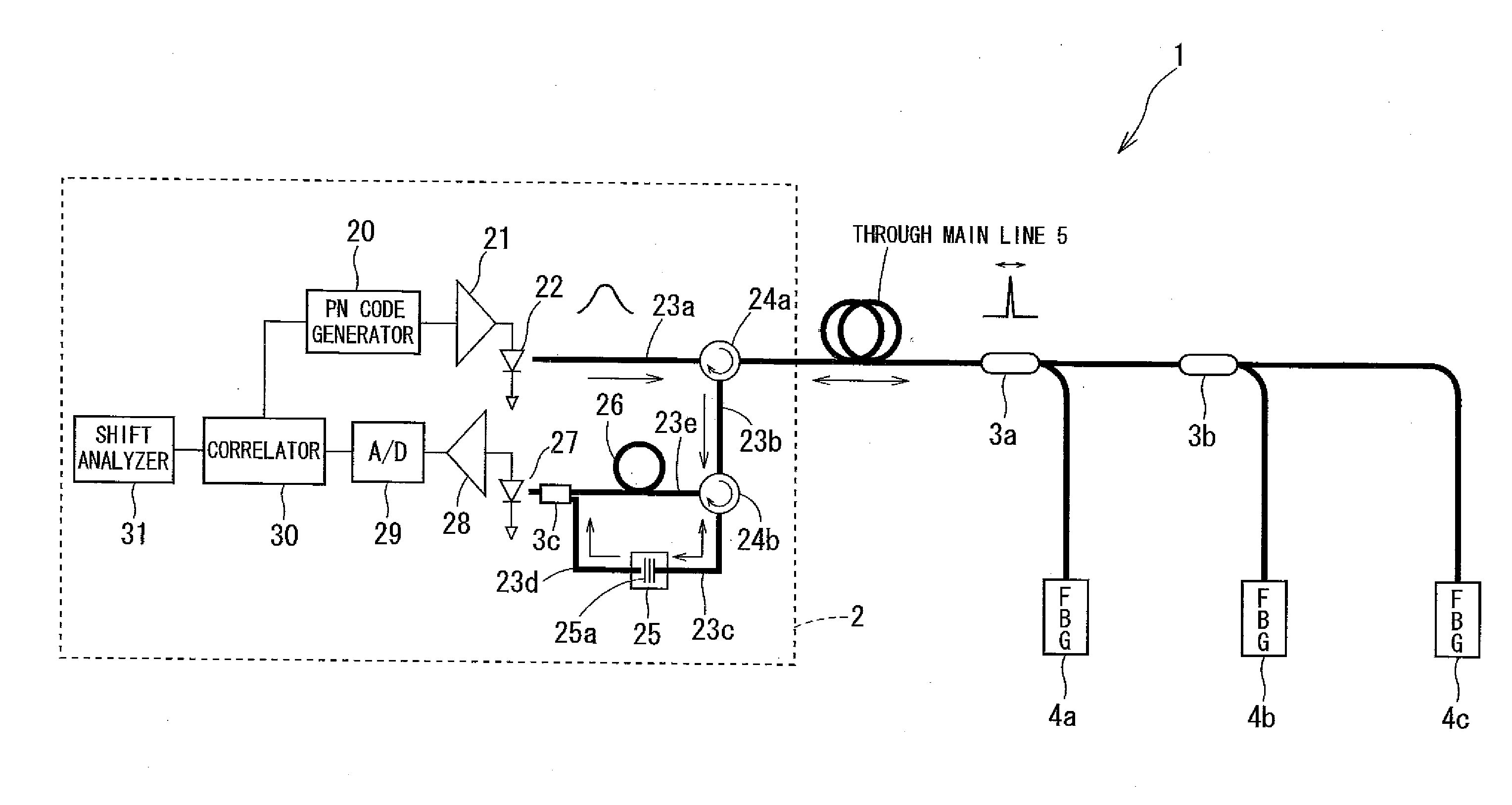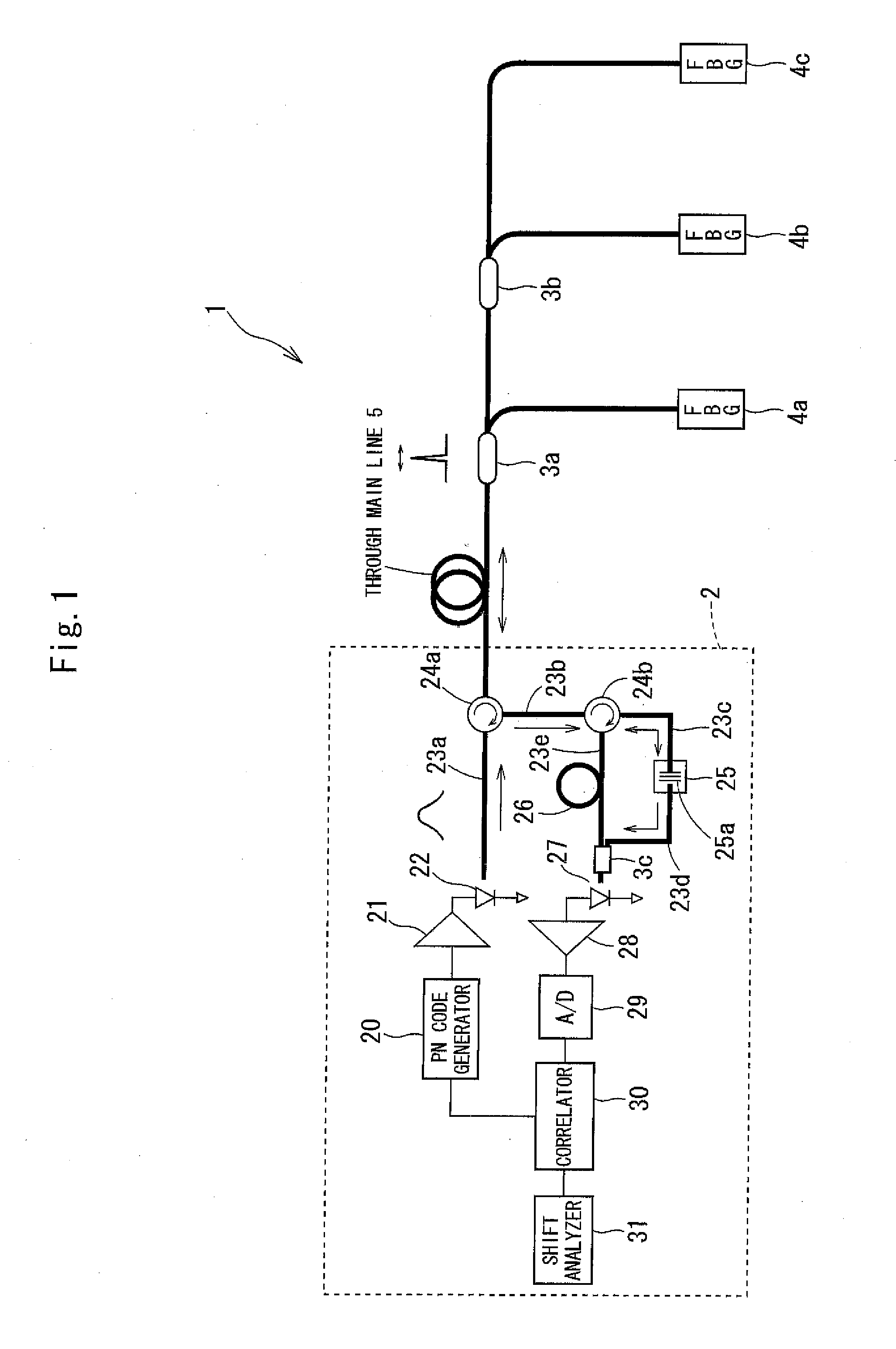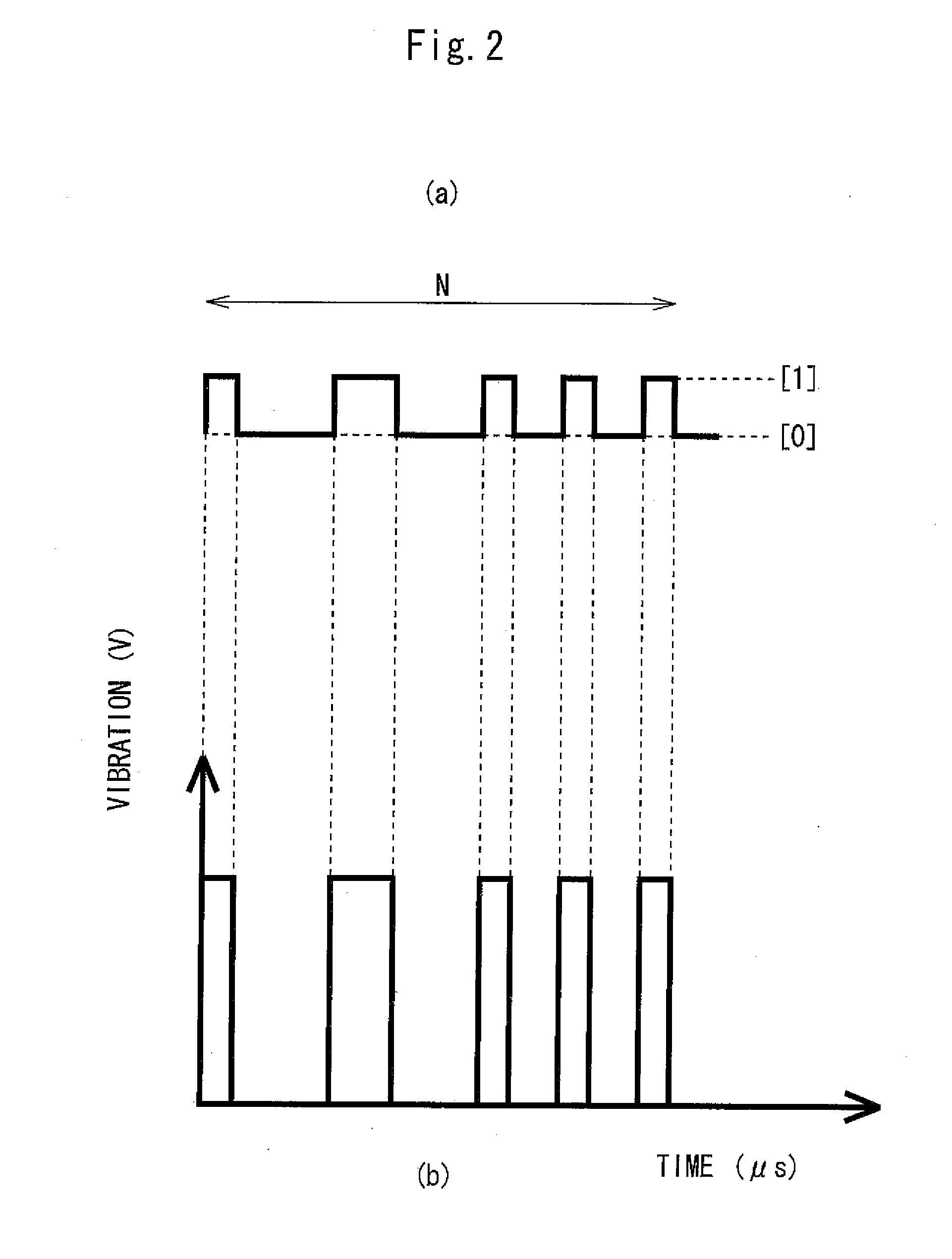Optical fiber sensing system
- Summary
- Abstract
- Description
- Claims
- Application Information
AI Technical Summary
Benefits of technology
Problems solved by technology
Method used
Image
Examples
first embodiment
[0130]First of all, a first embodiment of the present invention will now be explained with reference to drawings.
(Overall Configuration)
[0131]FIG. 1 is a diagram that illustrates the overall configuration of an optical fiber sensing system according to a first embodiment of the invention.
[0132]As illustrated in FIG. 1, an optical fiber sensing system 1 includes a measurement apparatus 2, optical couplers 3a and 3b, and FBGs 4a, 4b, and 4c, etc. The two optical couplers 3a and 3b are inserted on a through main line 5. The FBGs 4a and 4b are connected to the ends of respective branch lines, which branch at the optical couplers 3a and 3b from the through main line 5. The FBG 4c is connected to the end of the through main line 5.
[0133]The measurement apparatus 2 includes a PN code generator 20, a light source driver 21, a broadband light source 22, optical fibers 23a, 23b, 23c, 23d, and 23e, circulators 24a and 24b, a temperature control mechanism 25, a wavelength tilt filter 25a, a dum...
example 1
[0286]Next, as a specific example of a reflective sensor unit, a position change sensor unit 130 that is used for detecting a change in position (shift, displacement) as information on the physical quantity of a measurement target object will now be explained.
[0287]FIG. 24 is a diagram that illustrates the configuration of the position change sensor unit 130.
[0288]As illustrated in FIG. 24, the position change sensor unit 130 includes an optical coupler 131, an optical fiber collimating system 132, a dummy fiber 133, an isolator 134, etc.
[0289]The optical fiber collimating system 132 includes lenses 132a and 132b, which are aspherical opposed lenses (or rod opposed lenses), a transparent plate 132c, which is made of a borosilicate crown optical glass, a reflector plate 132d, which is made of a borosilicate crown optical glass with gold vapor deposition (or multilayer vapor deposition), etc. The transparent plate 132c and the reflector plate 132d are oriented perpendicular to the dir...
example 2
[0353]Next, a second example according to the present embodiment of the invention will now be explained.
[0354]In this example, a temperature-sensing reflective sensor unit that is used for detecting temperature information as information on the physical quantity of a measurement target object is described.
[0355]FIG. 39 is a diagram that illustrates the configuration of a temperature sensor unit 230, which is a temperature-sensing reflective sensor unit.
[0356]As illustrated in FIG. 39, the temperature sensor unit 230 includes an optical coupler 231, a reflecting system 232, a dummy fiber 233, the isolator 134, etc.
[0357]The reflecting system 232 includes a first ferrule 232a, a sleeve 232b, a second ferrule 232d, etc.
[0358]A dielectric multilayer film is vapor-deposited on an end face of the second ferrule 232d as a tilt filter 232c. As the reflection property of the tilt filter 232c, its reflection factor changes as the temperature of a measurement target object changes.
[0359]Next, ...
PUM
 Login to View More
Login to View More Abstract
Description
Claims
Application Information
 Login to View More
Login to View More - R&D
- Intellectual Property
- Life Sciences
- Materials
- Tech Scout
- Unparalleled Data Quality
- Higher Quality Content
- 60% Fewer Hallucinations
Browse by: Latest US Patents, China's latest patents, Technical Efficacy Thesaurus, Application Domain, Technology Topic, Popular Technical Reports.
© 2025 PatSnap. All rights reserved.Legal|Privacy policy|Modern Slavery Act Transparency Statement|Sitemap|About US| Contact US: help@patsnap.com



